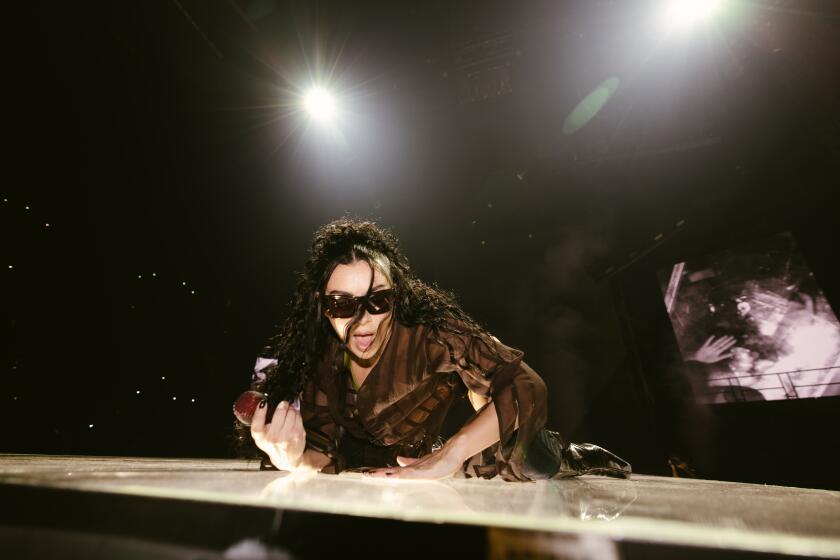ARCHITECTURE : Hot Dog Stand Withstands Blitz of Commercialism--With Relish
- Share via
Some things in life are simple, like the fact that a building shaped like a doughnut will sell doughnuts or one shaped like a hot dog will sell hot dogs. But sometimes a simple shape that stands for one thing becomes, as Dr. Freud taught us, something a bit more.
So it is with Tail o’ the Pup. The hot dog building is now an icon: a shape that reminds us not only of a specific kind of food but also of the very simplicity of the days when things looked like what they were.
Tail o’ the Pup is not much of a building, nor are its hot dogs anything to write home about, but it is important enough to have survived the commercial onslaught that converted its original site into just another part of the nascent neighborhood of shopping malls rising around Beverly Center.
A few years ago, it was moved to a safe little parking lot a few blocks north, on San Vicente Boulevard. Instead of just another slightly run-down fragment of a confusing commercial strip, it is now a spruced-up, isolated emblem of pop culture. It still sells hot dogs, but now you can even sit and eat them on a little wooden porch under red-and-white umbrellas. This is one icon that makes life pleasant (if not necessarily healthy).
It has been doing business for a remarkably long time. Tail o’ the Pup was designed in 1938 by Milton J. Black, who was a master of Streamlined Moderne. He designed a number of zippy apartment buildings and factories all around the Westside. No doubt Tail o’ the Pup was one of his smaller commissions, though it has garnered more fame than the rest of his work put together.
It was not the only one of its kind, however. The 1930s saw Los Angeles dotted with little stands in the shapes of tamales, hamburgers and, somewhat more obscurely, dogs and owls. The Van de Kamp bakeries, shaped like little Dutch windmills, made the style almost respectable.
What makes this little structure so successful is its abstraction of the hot dog. The bun is rendered as two identical cylinders placed one on top of the other. Their meeting is obscured by a wavy yellow blob denoting mustard. The actual frankfurter is another abstract cylinder in a darker brown that protrudes from both ends of the bun cylinders. A hole cut into this composition of geometric solids serves as the service counter. It is shaded by a red-and-white-striped metal awning that mimics the waves of the main form.
The rest of the building is a simple volume, stucco on the front and covered with siding in the back. A vent and fan serve as a kind of miniature tower for this little castle of consumption. A red neon sign proclaims the name of the establishment, a takeoff on Hollywood’s Tail o’ the Cock restaurant. You get the joke, you get the image, you get your hot dog, and your involvement with this little piece of architecture is finished. The building is a sign and a store rolled into one. It is a machine for selling.
At least that was its original function. Now it is a pilgrimage destination and meeting point as much as it is a fast-food stand. Its abstract forms relate to the neighborhood in the same way as the much bigger bulks of the Beverly Center, Cedars-Sinai Medical Center and the Pacific Design Center: None have anything to do with it, other than to anchor the landscape as you drive around them.
Perhaps Tail o’ the Pup will migrate even further to a community that will cherish its proto-Pop Art nature. Better still, it could go directly into a museum, where we keep most things that mean more than they are.
More to Read
The biggest entertainment stories
Get our big stories about Hollywood, film, television, music, arts, culture and more right in your inbox as soon as they publish.
You may occasionally receive promotional content from the Los Angeles Times.










